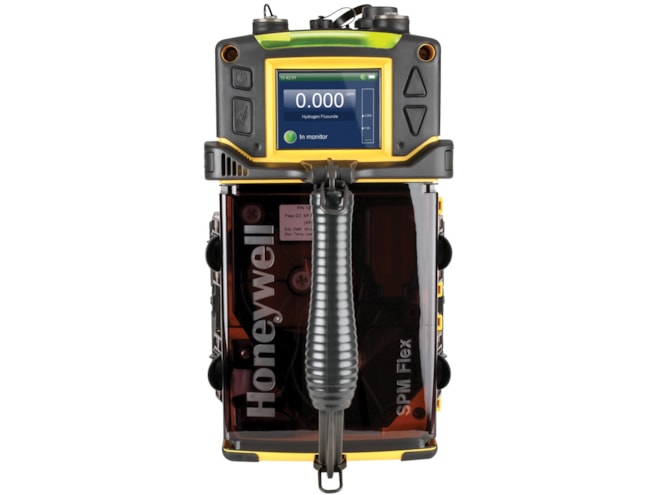The Honeywell SPM Flex gas detector is an extractive gas monitoring system that draws gas samples locally or from a remote point to a Chemcassette tape-based optical gas detection system. A wide range of toxic gas Chemcassette cartridges are available that enable detection of gases used or generated in semiconductor manufacturing and industrial environments.
The SPM Flex detects the ultrasensitive gases inherent in your operations, including hydrides, mineral acids and amines. Honeywell's Chemcassette tape technology shows the presence of gas quickly and definitively with a physical record helping users prevent costly downtime from false alarms. The SPM Flex with Chemcassette tape provides unmatched accuracy, flexibility and ease of use — even in challenging environments. You can rest assured that you're keeping your people safe and your operations running.
The SPM Flex gas detector, available in wall mounted and portable versions, locally displays gas concentration, alarm, fault and status information via its backlit color LCD and LEDs. A simple to use 4-button keypad adjacent to the display provides the ability to set-up, review, operate and make changes to the detector's configuration. The intuitive display and menu structure are designed to require minimal training. The SPM Flex has a local audio alarm with user-configurable output levels. The detector can be used both indoors and outdoors in a wide range of weather conditions.
The detector has flexible power and communications capabilities. These include 3 on-board relays, 4-20 mA analog output and Modbus/TCP outputs for signal and service connectivity. The gas detector is equipped with a USB port for configuration-sharing firmware updates and data downloads. For web-enabled devices, web pages are available via the Ethernet port.



















